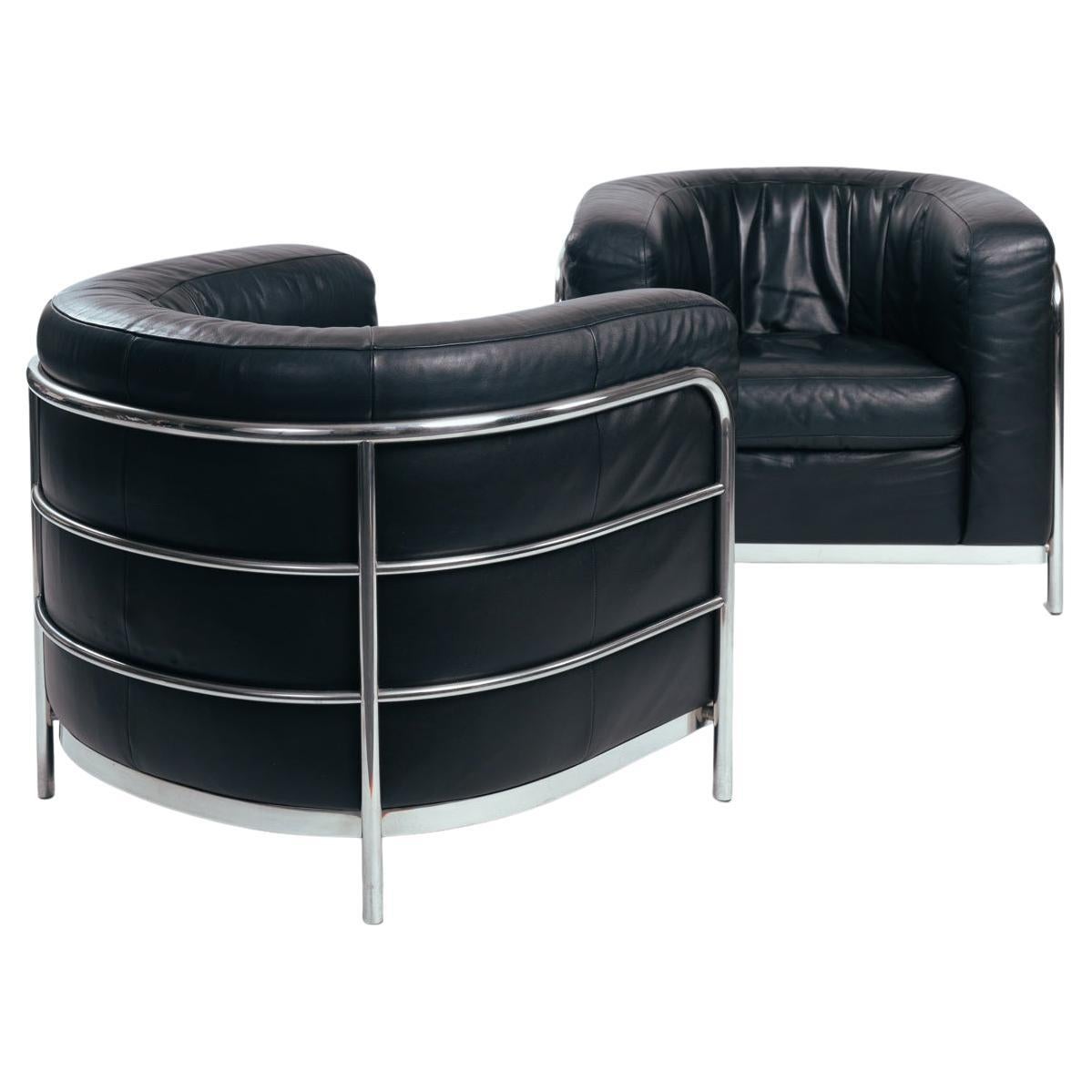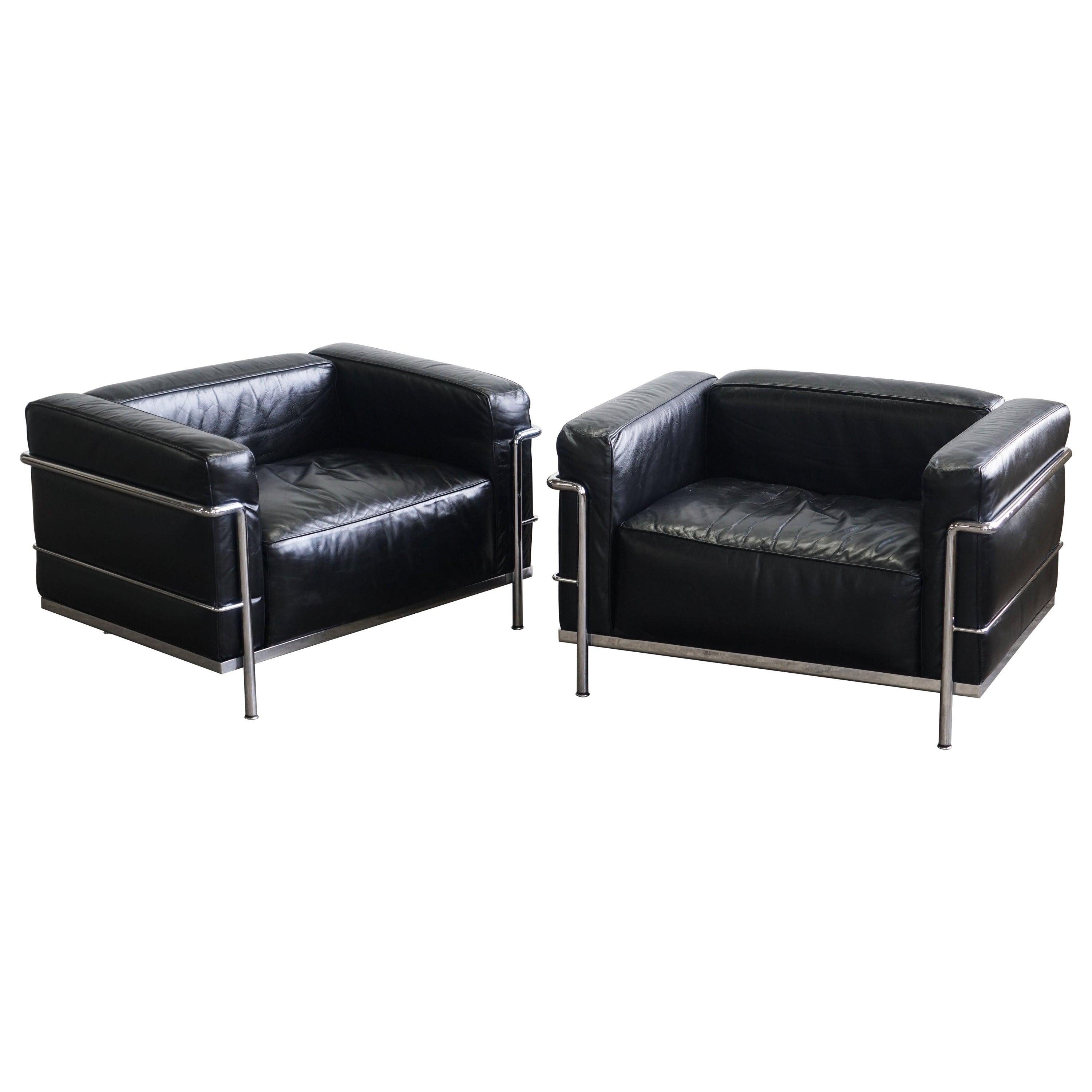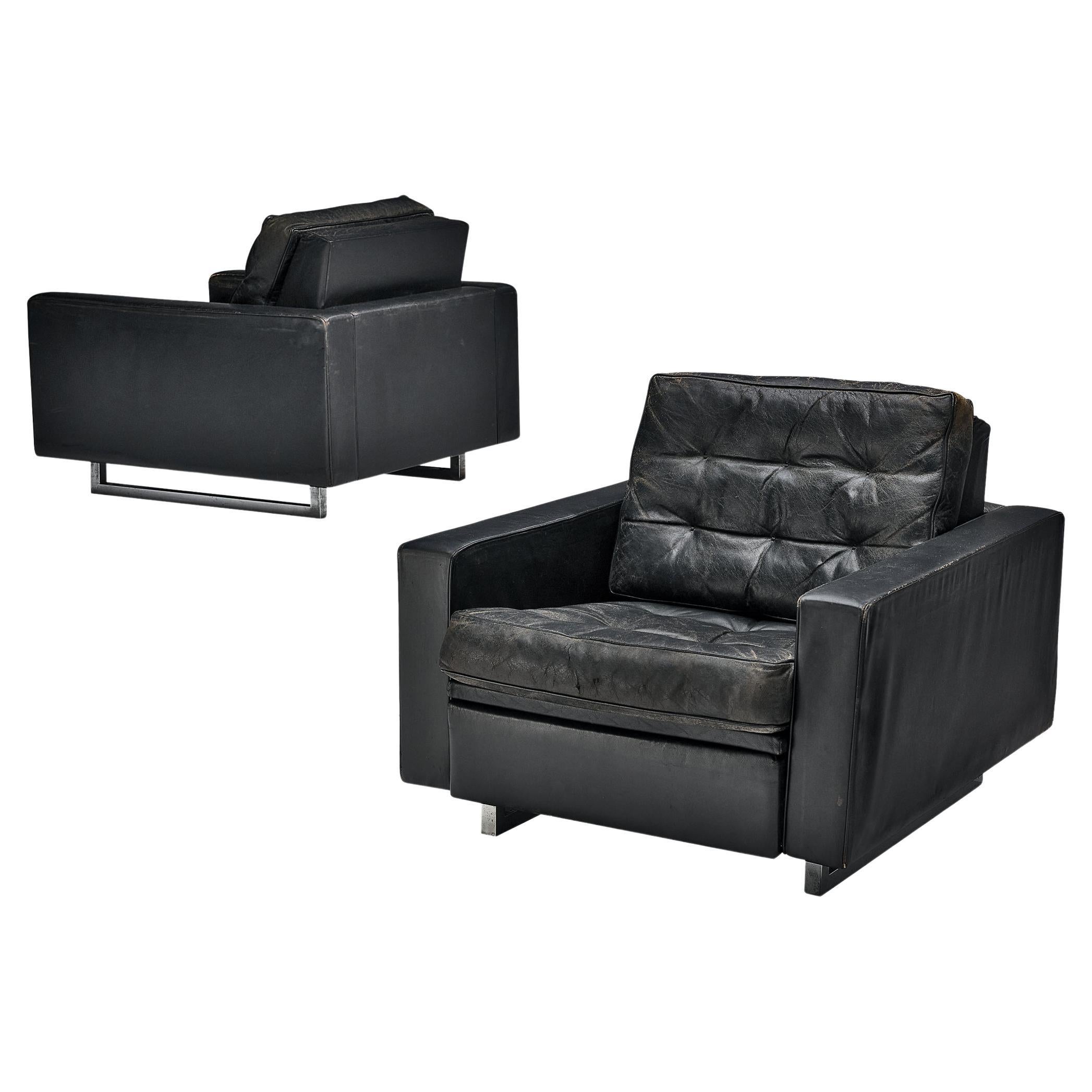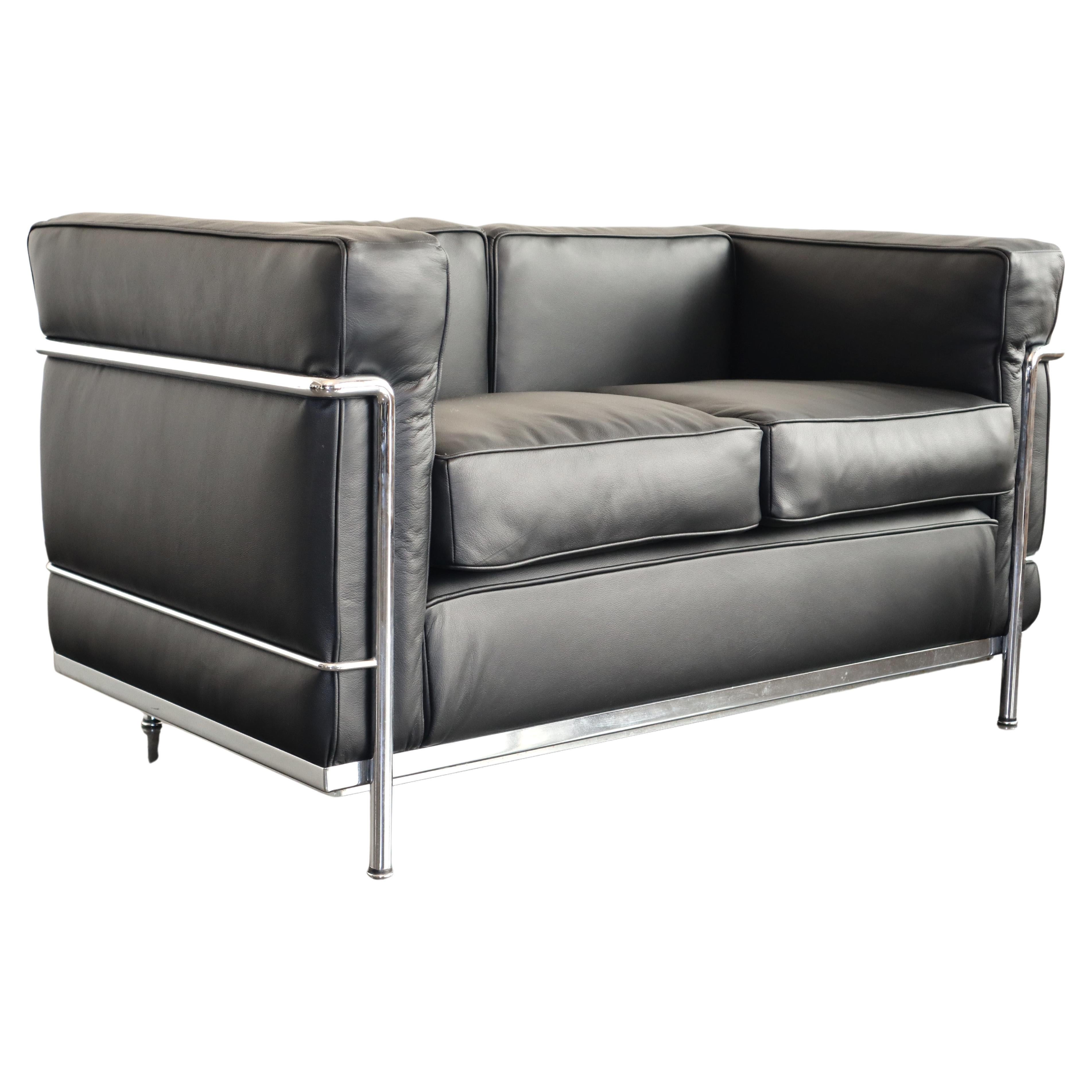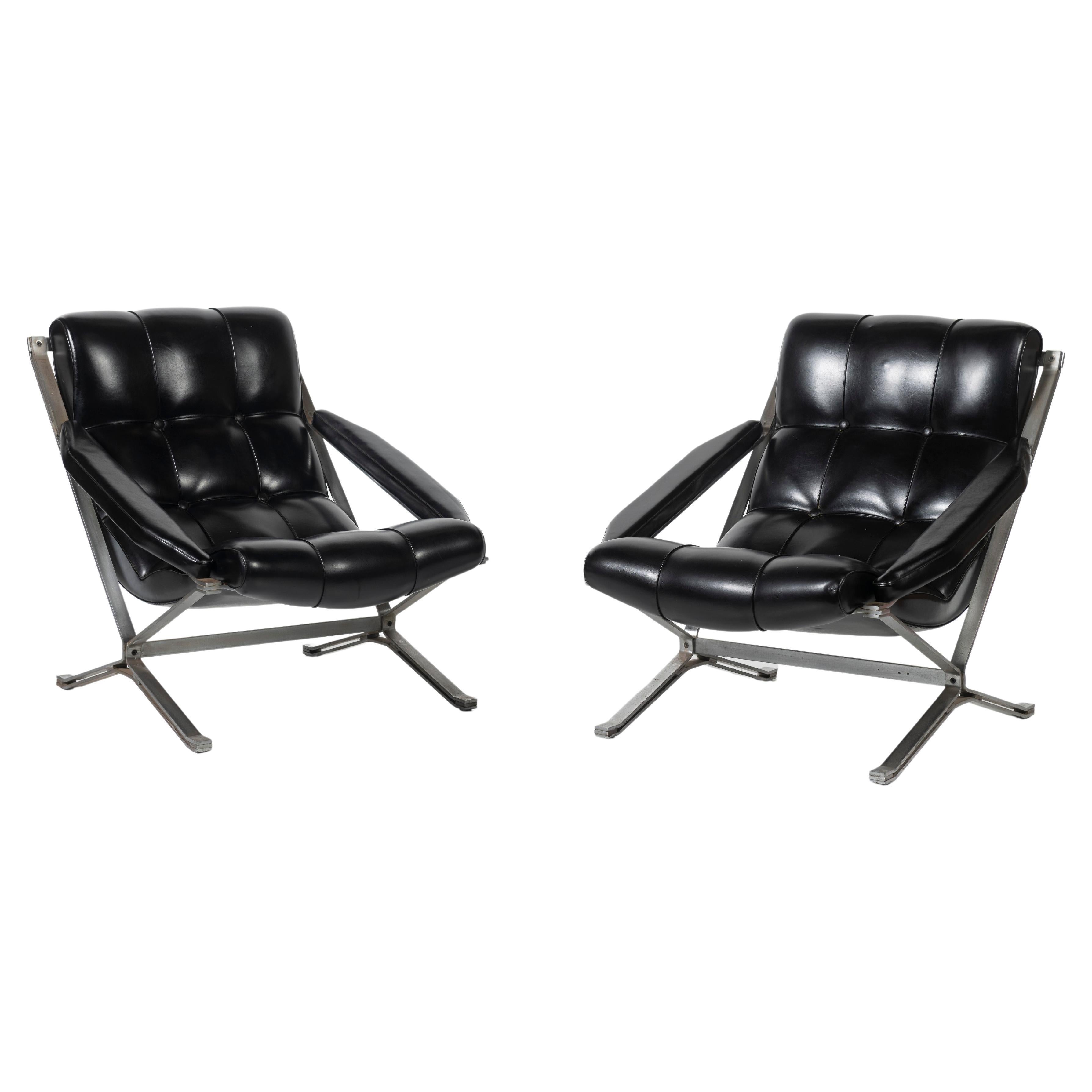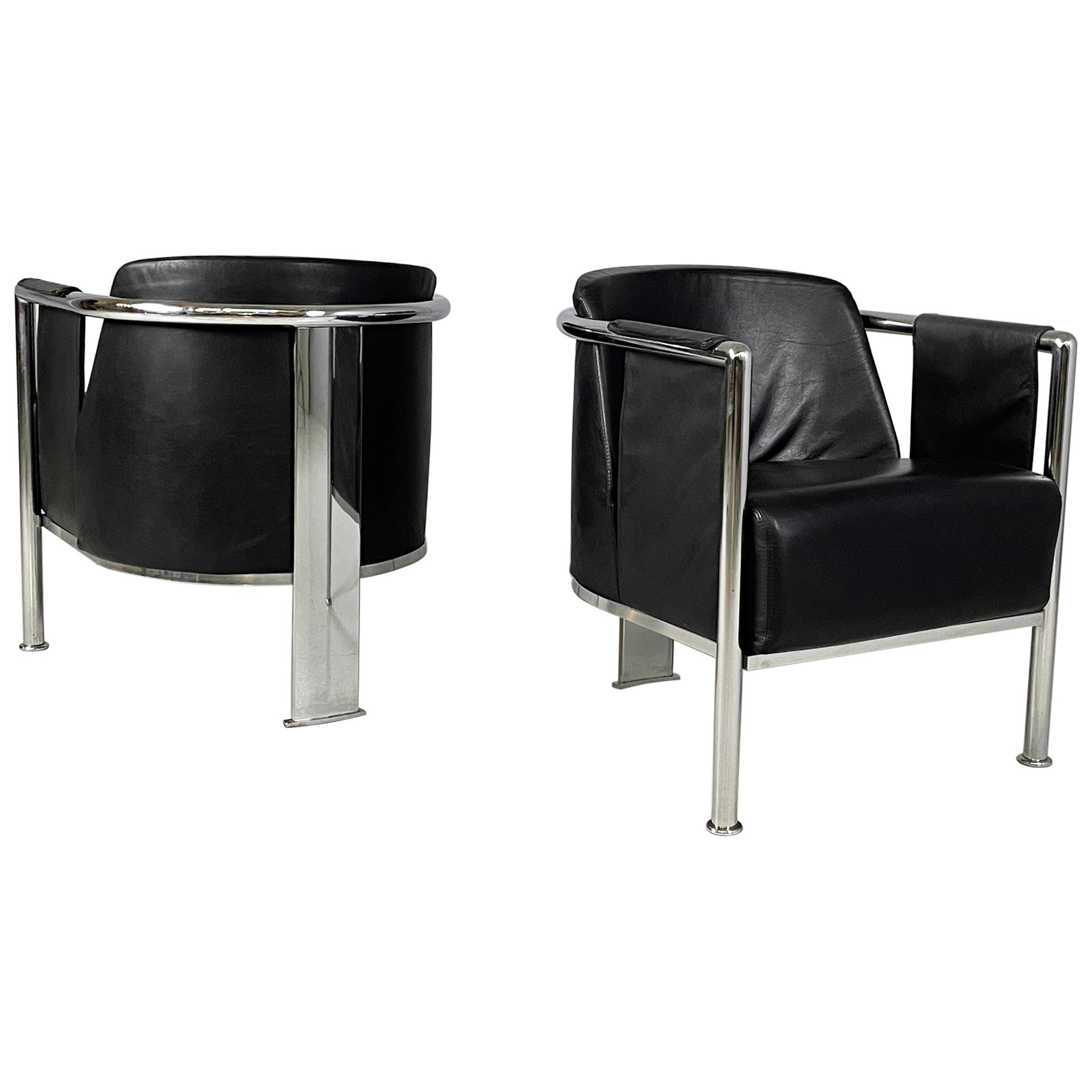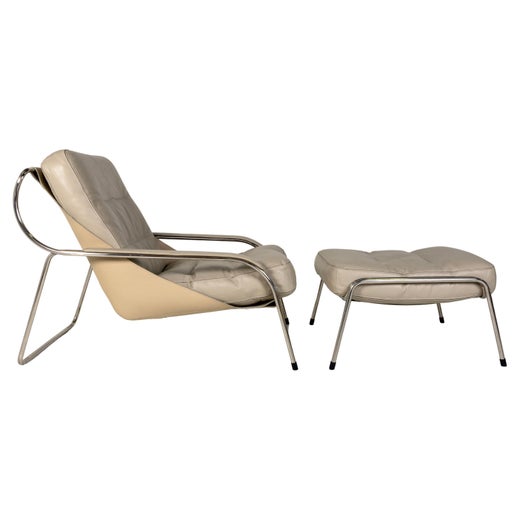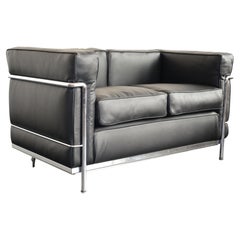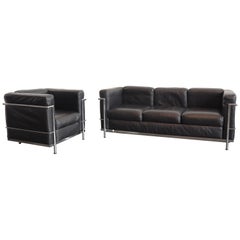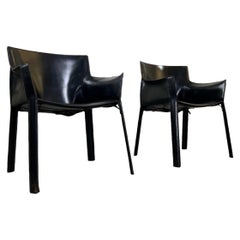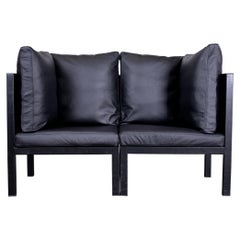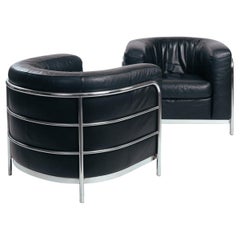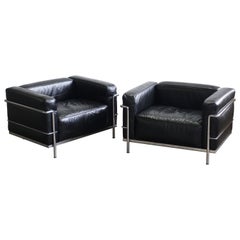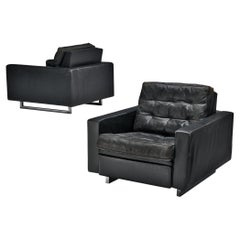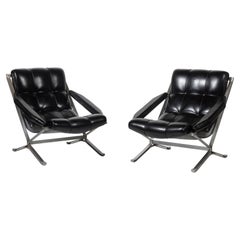Zanotta Onda Pair of Armchairs in Matte Black Leather Chrome by De Pas, D'urbino
About the Item
- Creator:Zanotta (Manufacturer),Gionathan de Pas & Donato D’Urbino & Paolo Lomazzi (Designer)
- Similar to:Le Corbusier, Pierre Jeanneret, Charlotte Perriand Cassina (Designer)Marcel Breuer (Designer)
- Dimensions:Height: 28.35 in (72 cm)Width: 35.04 in (89 cm)Depth: 35.44 in (90 cm)Seat Height: 15.75 in (40 cm)
- Sold As:Set of 2
- Style:Bauhaus (In the Style Of)
- Materials and Techniques:
- Place of Origin:
- Period:1980-1989
- Date of Manufacture:1985
- Condition:Refinished. Minimal signs of use considering age. Leather has been professionally repigmented.
- Seller Location:Grand Cayman, KY
- Reference Number:1stDibs: LU5587241818402
Zanotta
Entrepreneur Aurelio Zanotta founded Zanotta in 1954 in Nova Milanese, Italy. Originally called Zanotta Poltrona, it specialized in traditional furniture. By the early 1960s, however, Zanotta had established a reputation for edgy mid-century modern design. Today’s vintage furniture collectors know the brand well for its innovative and wholly sculptural chairs, coffee tables and more.
One of Zanotta’s earliest successes was the Mezzadro stool — better known as the Tractor stool — designed by Pier Giacomo Castiglioni and his brother Achille in the late 1950s. In 1965, Zanotta was among the first furniture companies to work with expanded polyurethane foam and frameless construction, such as for the Throw-Away sofas and armchairs designed by Willie Landels. Another popular design was the Blow chair — designed by Jonathan De Pas, Donato D’Urbino, Paolo Lomazzi and Carla Scolari — viewed by many as a physical expression of late '60s carefree culture.
In 1969, amid the provocative movement we now call Italian Radical Design, Zanotta’s Sacco chair garnered major attention. The boundary-pushing beanbag chair was the brainchild of designers Piero Gatti, Cesare Paolini and Franco Teodoro who presented it to Aurelio Zanotta as a transparent vinyl sack loosely filled with small polystyrene balls. He suggested its signature brightly colored leather.
The Sacco chair won the 1970 ADI Design Museum’s Compasso d’Oro award. In 1972, the Museum of Modern Art in New York included it in the landmark exhibition “Italy: The New Domestic Landscape” curated by designer Emilio Ambasz. In 2020, it received a Compasso d’Oro ADI Lifetime Achievement Award for 50 years of enduring popularity. It is now in museum collections around the world including the Triennale Design Museum of Milan, the Musée des Arts Décoratifs in Paris, and London’s Victoria & Albert Museum.
After Aurelio Zanotta died in 1991, the company remained in his family and has been run by his three children since 2002. Zanotta continues to set the bar high for furniture design with trend-setting pieces.
On 1stDibs, find a collection of vintage Zanotta seating, tables and other furniture.
- ShippingRetrieving quote...Shipping from: Friedberg, Germany
- Return Policy
More From This Seller
View AllMid-20th Century Italian Bauhaus Sofas
Steel, Chrome
Mid-20th Century Italian Bauhaus Sofas
Steel, Chrome
Vintage 1970s Italian Mid-Century Modern Chairs
Leather
Vintage 1980s Italian Post-Modern Corner Chairs
Steel
Mid-20th Century Italian Bauhaus Sofas
Steel, Chrome
Mid-20th Century Italian Mid-Century Modern Dining Room Chairs
Leather
You May Also Like
Vintage 1980s Italian Mid-Century Modern Armchairs
Steel, Chrome
Early 2000s Italian Bauhaus Lounge Chairs
Chrome
Vintage 1950s Swiss Mid-Century Modern Lounge Chairs
Steel
Vintage 1970s Italian Mid-Century Modern Lounge Chairs
Stainless Steel
Vintage 1980s Italian Modern Armchairs
Steel
1990s Swedish Modern Lounge Chairs
Steel
Read More
With Zanotta House, an Italian Design Dream Home Lands in New York City
Alessia Genova takes us on a tour of her design for the eminent furniture maker’s new shoppable townhouse in Greenwich Village.
‘The Brutalist’ Is Oscar Nominated, but What Is Brutalism?
The mid-20th-century design style is defined by its angular shapes and use of raw materials.
